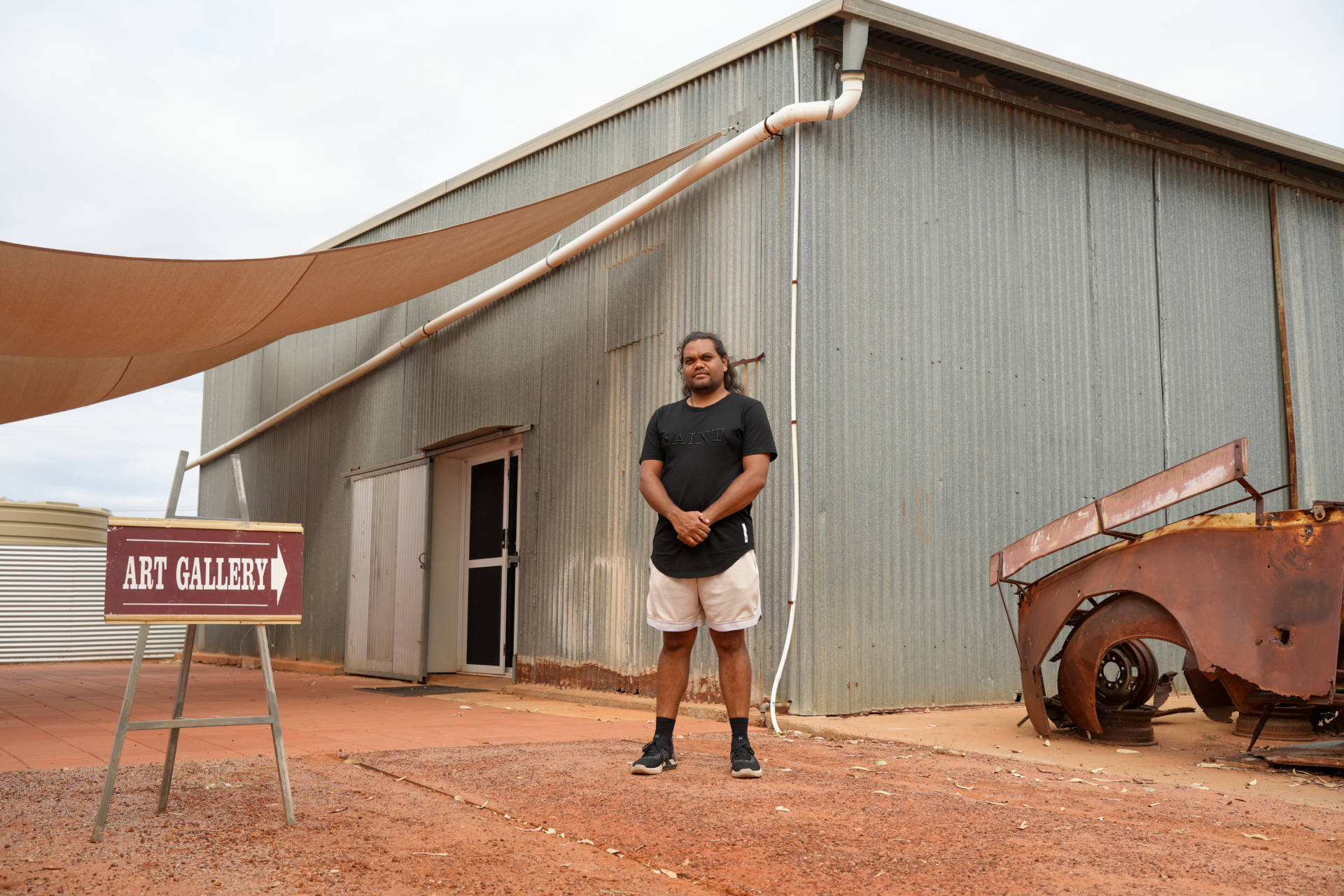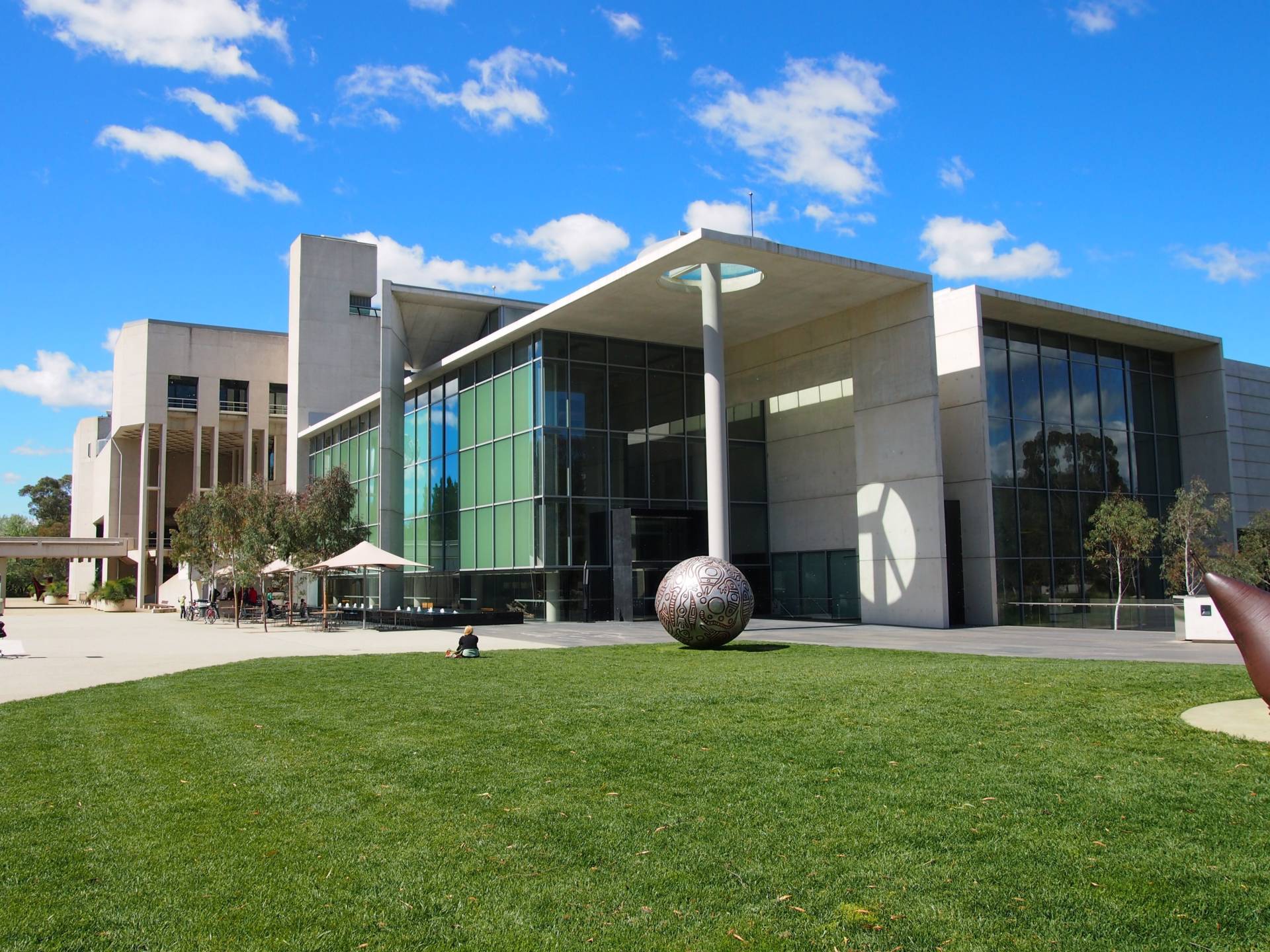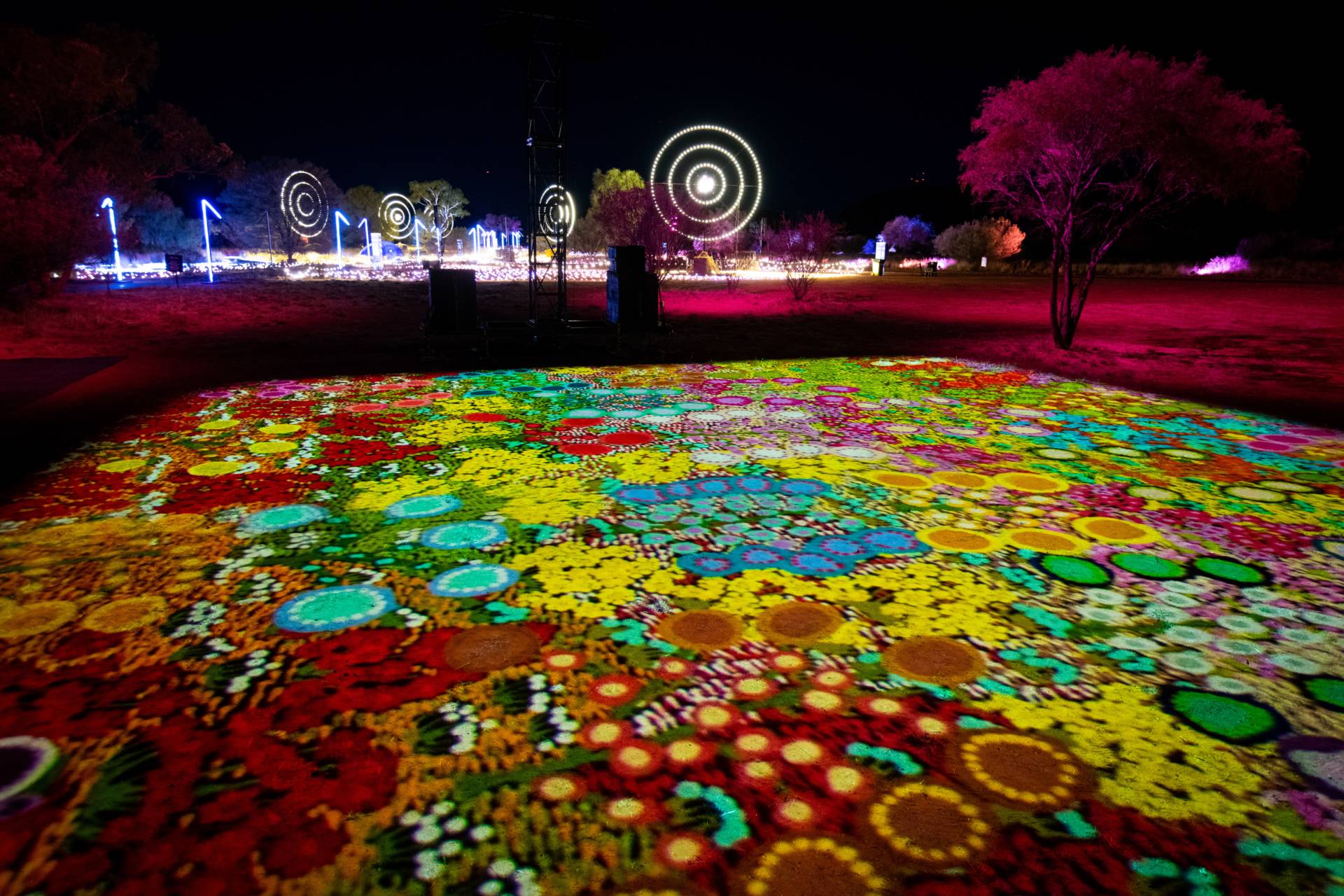Nicholas Williams outside an old tool shop in the NT that houses artworks by Albert Namatjira. (Emma Smith/AAP PHOTOS)
A collection of nationally significant paintings from the Hermannsburg School, including watercolours by famed artist Albert Namatjira, are being stored in a converted tool shop exposed to dust, light and bugs.
The mission at Hermannsburg, also known as Ntaria, in the Northern Territory was once the home of Namatjira, who in the 1930s became the first Aboriginal artist to paint the land in western-style watercolours.
It led to international fame, with the style of Namatjira and his fellow artists becoming known as the Hermannsburg School, their paintings displayed in galleries around Australia and internationally.
But in the remote town where the movement began, 84 paintings are stored in an old corrugated iron mechanical workshop, part of which has been sectioned off and lined with shipping container panels to convert it into a gallery and storage area.
In the extreme climate of central Australia, it’s not properly temperature-controlled or air sealed and the light is too harsh for watercolour paint.
“Watercolours don’t like moisture and the bugs get in,” Finke River Mission operations manager Wayne Beven told AAP.
Among his many jobs at the Mission, Beven looks after the collection for the town’s historical society, chaired by Western Arrarnta man Nicholas Williams.
They are doing their best but Williams says a lack of facilities has forced the community to turn down offers to return important works to Hermannsburg.
“There’s a lot of families that want to donate. We just can’t take them. We’ve had to say no,” he said.
The paintings often end up 130km to the east at Araluen Arts Centre in Alice Springs.
Williams says his community is missing out.
“There’s a lot of things that we could do … we could be making money off that for further works and restoration,” he said.
Both would like to see the gallery upgraded or a new facility built to stop the artworks from degrading.
A 2016 audit found a woomera and a faded painting, both by Namatjira, had deteriorated so much that their aesthetic integrity had been compromised, although the damage happened before they were moved to Hermannsburg.
Quite apart from the watercolours, there are about 800 artefacts in the historic precinct still to be assessed – a record of the Mission that was established in 1877 and provided some sanctuary for Arrarnta people during frontier violence.
A 2017 expert assessment found the collection was “of national significance and responsibility”, and recommended hiring professionals to manage it long-term.
Six years later, that hasn’t happened.
Alison French, one of the authors of the report who has penned two books on Albert Namatjira, says Indigenous curatorial expertise is crucial.
“I’m disappointed that has not been supplied for the community,” French told AAP.
Through a series of small grants from the National Library of Australia, expert conservator Eric Archer remounted and reframed 30 of the highest priority paintings in 2019, including works by Namatjira, Lindberg Inkamala, Reuben and Otto Pareroultja, Richard Moketarinja and Therese Ryder.
Archer says given the conditions, the paintings appear in surprisingly good shape.
“There was quite a bit of surface dirt build-up, a few mechanical problems, a little bit of mould that caused some discolouration,” he told AAP.
While the National Museum has shown some interest, there is no funding or plan in place to restore the rest of the paintings.
Indigenous culture is a key plank of the Federal Government’s recent national cultural policy and it has committed $80 million to a National Aboriginal Art Gallery in Alice Springs.
Yet those in Hermannsburg don’t see Alice Springs as an option – almost everyone AAP spoke to for this story felt the collection is valuable not only due to its contents but where it is located – in the community where it matters most.
Local guide Benjamin Kenny explained that while most people looking at a Hermannsburg landscape would see a beautiful painting, he can also see dreaming stories of the country around him.
The Western Arrernte man said the colours of the Hermannsburg School “brought the landscape back alive” – and the paintings have a broader message too.
“Albert Namatjira not only painted for his people but people travelling all over the world. They would remember his painting and think: ‘This is Australia. This is where I’m from’.”
AAP





